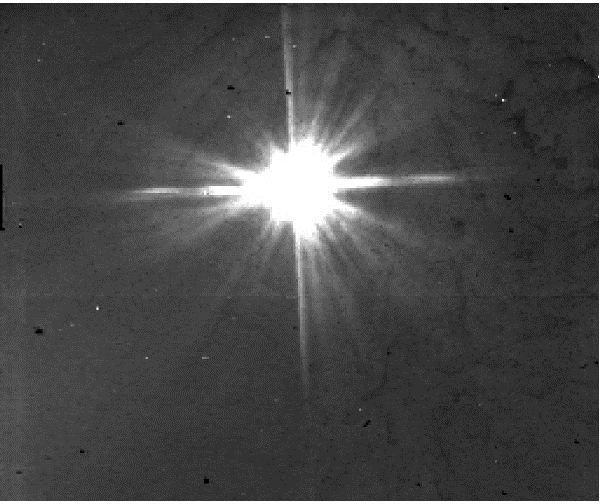About the Vega Star: Facts and Other Interesting Informaiton
Quick Vega Star Facts
Vega is a large star that is relatively close by. Here are some quick Vega star facts.

- It rotates in less that one day, by comparison the Sun’s rotational period is 27 days.
- The distance from the Sun, about 25 light years.
- It has a solar mass that is 2.3 to 3.1 times the Sun’s mass
- The diameter of the star Vega is about 2.73 times the Sun’s size.
- This is a near zero-magnitude star; it is visible to the naked eye. In Earth’s northern sky, it is the third brightest star after Sirius A and Arcturus. It is fifth brightest star overall.
- The surface temperature is about 18,000°F at the poles and about 14,000°F at the equator.
- It is about 350 million years old but will run out of core fuel in 650 million years.
- It is a Class A (A0) white main sequence dwarf star. It runs on hydrogen like the Sun.
- It functions is a standard calibration star in optical astronomy … this is to calibrate the color scale for stars.
- It is sometimes called the “Harp” star because it is supposed to be the harp played by the ancient Greek musician, Orpheus.
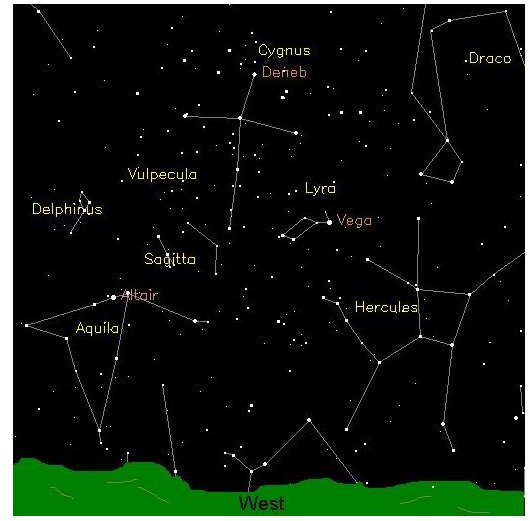
See also: Just What Is That Bright Star In The Night Sky?
Vega and Surrounding Space Objects
Vega, with its high infrared radiation, has offered some interesting observations. Vega appears to have a surrounding disk of dust. The origin of this dust is likely to be from the collisions between objects in an orbiting debris disk. This is similar to the Kuiper Belt in the Solar System. For more information about the Kuiper Belt see the article: The Kuiper Belt.

In fact, the term, Vega-like stars apply when stars display an infrared excess caused by dust emission. Furthermore, irregularities in Vega’s disk tend to suggest the presence of a planet.
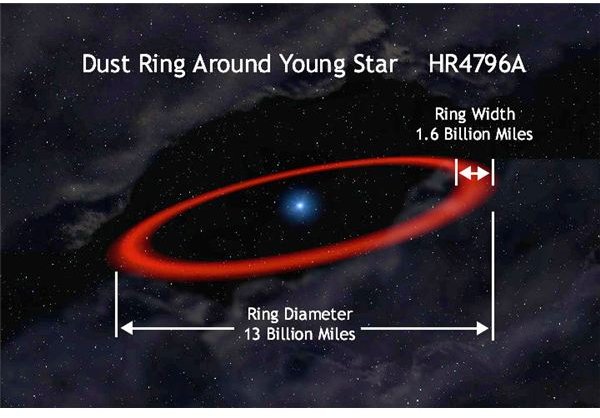
Vega is also close to the solar apex. This is a direction in the galaxy toward which the Sun is moving; it is about 10° southwest of the star Vega. In contrast, there is an illusory path that the Sun appears to take through the constellations in the Zodiac. This is not the actual direction the Sun is taking. See also: The Constellations of The Zodiac.
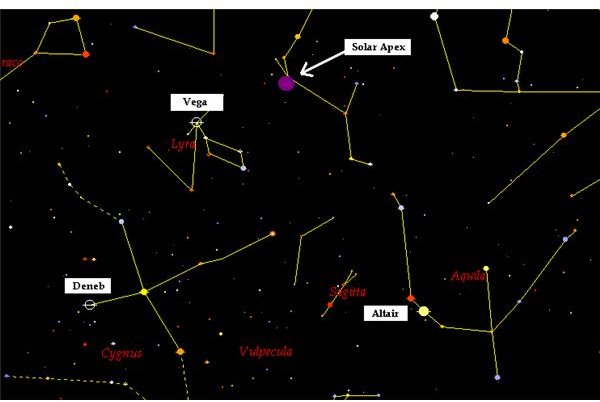
The Summer Triangle
Three stars form a stellar right triangle making it one of the best landmarks in the August night sky. Vega is at one vertex, and it is located high above in the sky at the constellation’s western-most point, and it appears as the brightest of the three. Then Deneb, to the east of Vega, appears the dimmest. Finally, Altair lies below to the south, and it forms the most distant point of this triad. These three stars belong to an unofficial star group that together link the constellations Lyra (Vega), Cygnus the Swan (Deneb), and Aquila the Eagle (Altair).
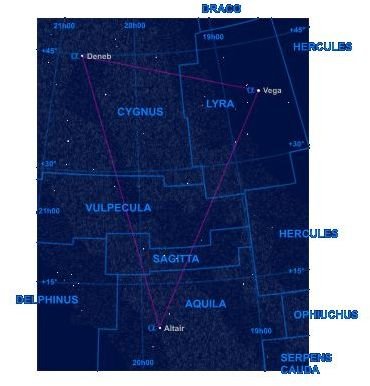
Vega - One of the Polar Stars
It takes about 25,770 years to complete Earth’s precession cycle. During that time, the pole of the Earth’s rotation will follow a circular path across the celestial sphere. In that circular path, it passes near several prominent stars. At the present time, the pole star is Polaris.
You can follow the positions of the stars each night as they appear to change as the Earth rotates. But the direction of the Earth’s axis of rotation is not permanent and it gradually changes over time through the precession of the equinoxes. The precession is the tilting within the rotation of a spinning object. For instance, as a top spins around, it tilts back and forth, during it’s rotation. This is the precession. So while Polaris is today considered the North star, there have been others and the mantel will be passed on over time.
- Thuban (located in the constellation Draco) was the pole start around 3000 BC and will be pole star again in around 20346 AD.
- Vega (located in the constellation Lyra) was the pole star around 12000 BC and will be the pole star again around 14000 AD.
- Gamma Cephei (a binary star in the Cepheus Constellation) will become the pole star around AD 3000.
- Iota Cephei (located in the constellation Cepheus) will become the pole star around AD 5200.
You can read more about Polaris at: All About the North Star Polaris.
This image shows how the precession works.The position of the polar stars from earth perspective is affected by the precession.
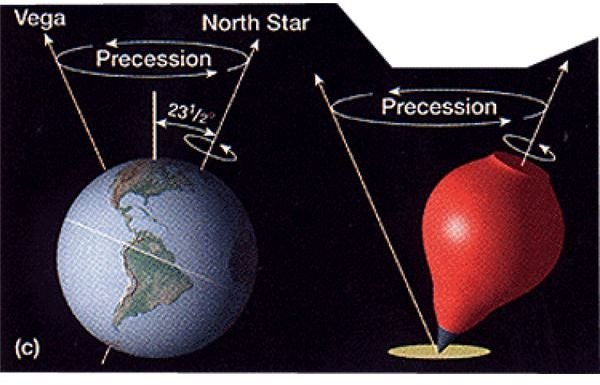
This image shows the North Pole and South Pole Precession.
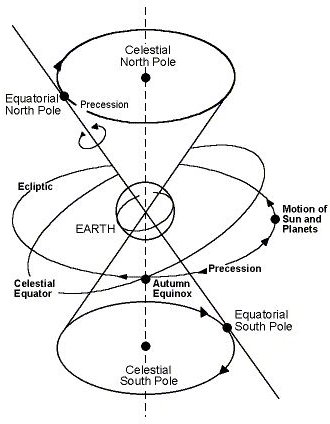
Summary
Vega is an interesting star because it has many features that attract professional astronomers to it as well as amateurs. Because it is the fifth brightest star in the sky it is easily visible. It’s position makes it one of the polar stars, it resembles our Sun with the Kuiper belt because it has a dust cloud surrounding it; and it is one of the stars in the Summer Triangle. It is sometimes referred to as the Harp star.
Image Sources:
Quick Facts on Vega
Image 1: https://ugastro.berkeley.edu/~dnelson/astroimg.html
Image 2: https://www.solstation.com/stars/vega2sol.jpg
Image 3: https://www.solstation.com/stars/vega2map.jpg
Vega and Surrounding Space Objects
Image 4: https://astronomy.swin.edu.au/cms/imagedb/albums/userpics/kuiperbelt.jpg
Image 5:https://oposite.stsci.edu/pubinfo/pr/1999/03/content/9903c.jpg
Image 6: https://www.daviddarling.info/encyclopedia/S/solar_apex.html
The Summer Triangle
Image 7: https://www.glyphweb.com/esky/constellations/summertriangle.html
Vega - One of the Polar Stars
Image 8: https://www.astro.virginia.edu/~mnc3z/images/astro121/precession.gif
Image 9:https://www.borobudur.tv/Image/Precess_1.gif
Sources:
https://earthsky.org/brightest-stars/vega-brilliant-blue-white-is-third-brightest-star
https://www.space.com/scienceastronomy/060110_vega_cool.html
